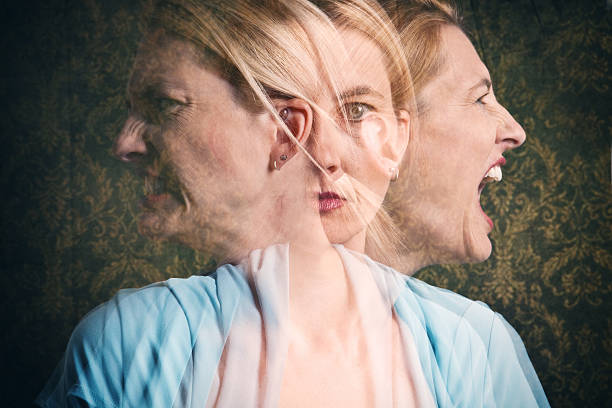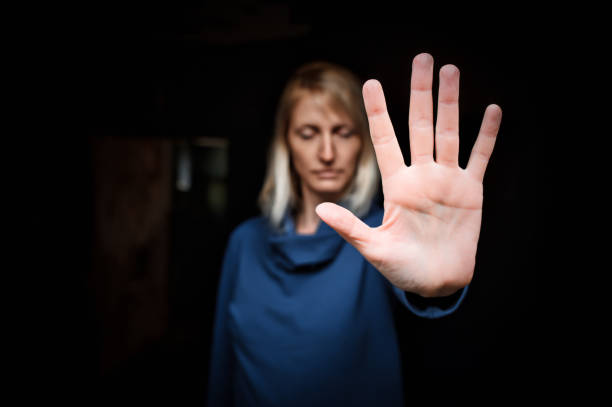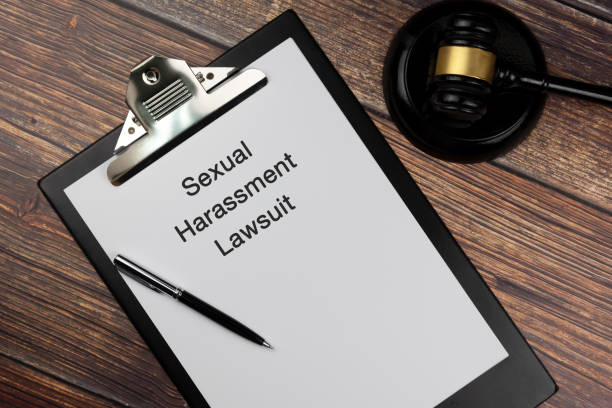
Mistakes and misconceptions
It is important to discuss the mistakes and misconceptions of sexual harassment in order to break down harmful stereotypes. People who do not reside within statistical norms will usually feel more isolated and less likely to inform someone else of their experiences and harassment.
This articles is intended to educate people in the most common sexual harassment mistakes and be aware if these stereotypes happen. If you fall into one of these misconceptions then know that your experiences are valid and we are here to help.
1. That it has to be ongoing or recurring
Sexual harassment does not have to be an ongoing or reoccurring problem for people to feel embarrassed, humiliated, or upset by it. The bottom line is that an employee felt uncomfortable, humiliated, or upset at all due to something of a sextual nature without giving their consent.
This could be a singular moment where an employee was touched inappropriately, or had been shown explicit pictures, or that a sexual joke was made at their expense. No Australian legislation stipulates that the sexual harassment or general behaviour must be repetitive or ongoing.
Per the Australian Human Rights Commission (AHRC) about 15% of sexual harassment victims experienced one off incidents. The largest percentage was 50% of victims that had experienced sexual harassment continuously for up to 6 months. An interesting comparison and breakdown of victims.
Which may also explain why it is a misconception that sexual harassment must be ongoing to be considered sexual harassment. Simply that it is more common to hear of ongoing harassment than one off events.
Click here to read how a single poster had awarded a sexual harassment victim $200,000 in general damages

2. That you are over or under reacting as a victim
To be a victim of a crime is always a serious matter and all people will react differently. Due to the variety of emotions and reactions people experience, a multitude of other misconceptions can form. Such as;
- People are lying if they do not report sexual harassment immediately
- People are lying or “it could not have been that bad” if they are not visibly upset or emotional
- People are lying if they cannot remember what happened
- That people are lying in general no matter the circumstances because victims are not reacting as they deem appropriate.
The Australian Institute of Criminology have collated a 2020 report that identifies all the above assumptions as common mistake or misconceptions about victims. In reality it is normal to have a variety of emotions or reactions that can span a short or long period of time.
At Sexual Harassment Australia we have received calls from victims the following day or three year after the fact. There is no true normal reaction and anything else is a misconception and lie.
Delay in disclosing sexual harassment
However, statistics show that some reactions are more common than others. For example, it is more likely for there to be a delay before a victim reports or discloses anything. That is if they disclose anything at all. It is theorised that “83% of Australian women did not disclose their sexual assault to police. And only 6 out of 10 sought advice or help”.
Delay or lack of disclosure at all can occur for a number of reasons. Some out of fear for their perpetrator. Especially in workplace environments where the victim may have to see their perpetrator every day or week.
Another reason is due to the unfortunate cycle of victim blaming and the fear of misconceptions that have stayed in society. Or some people just do not want to believe or acknowledge that the event occurred at all.

Do employees remember what happened?
To be a victim, for most, is a traumatic event. Therefore, it can affect a person’s memory or coping abilities. For some people to remember these events will instantly result in tears or heightened emotions. Which is what most people would consider the “typical response”, which is a misconception.
Others may be extremely calm or monotone. Both (and everything in between) are legitimate coping strategies that are often not an intentional or conscious reaction.
Some researchers have found that the most “telling sign” is whether a person’s emotions are consistent as they repeat or relive their story. People’s emotions can fluctuate however over a long period of time there tends to be a reoccurring or common reaction from the victim.
Additionally, it is a are common mistake that a victim’s memory would be very clear and precise when retelling these events. However, a variety of things can occur. Depending on the circumstance a victim’s memory can be clear.
Such as in an office with bright lights and it was a singular event. However, some people may forget portions and only remember what occurred occasionally. Memory for everyone tends to be somewhat unreliable, especially as time goes on. Therefore, in professional spaces, if possible, there tends to be less reliance on memory alone.
3. That it’s “only a joke”
A common sexual harassment mistake is that a joke, something said in a commercial fashion, or coming from the “work clown” cannot be sexual harassment because it was “only a joke” and to “lighten up”.
This misconception is incredibly harmful as it minimises the voice of victims and allows sexual harassment behaviours to not only continue, but actively supports it. The perpetrators are supported by their peers while the victim feels isolated, gaslit, and misunderstood.
There is no relevance to how the harassment is said, done, or whether it was intentional. What courts and judicial decision makers will take into consideration was whether there was a sexual connotation. Whether it was nonconsensual.
And whether a ‘reasonable person’ would have felt humiliation, fear, uncomfortable, or other similar emotions. There is no singular reasonable person, but a hypothetical person that is used in an objective test. However, hysterically courts will be more lenient as to what will disturb, humiliate, or offend a reasonable person.
Therefore, if you feel genuinely offended, hurt, or humiliated by a joke, even if you believe there was no intention, it may be best to discuss the joke with the perpetrator or a safe person. Not all sexual harassment is done with malice.
However, if you believe that a joke was said with the intention to be sexually explicit and offensive then it is imperative to complain and discuss your grievances with your employer.

4. That you are alone as a victim
Unfortunately sexual harassment is a common experience and occurs in all types of workplaces and industries. It is not unlikely that people will have either experienced sexual harassment or knows someone who has. However, the silver lining is that there is aid and statistics to help victims.
No victim is alone in their experiences or suffering due to the amount of substance there is to sexual harassment. Victims can further educate themselves on our website or official government avenues, find support groups, read cases about other victims, and more.
In the 2022 Australian Human Right Commission report on sexual harassment in the workplace, surprising statistics were found to dispel the misconception that sexual harassment is a rare event. About 1 in 5 people (19%) had experienced sexual harassment in the workplace in the previous 12 months. Whereas, that number increased to 1 in 3 (33%) when looking at the previous 5 years.

The victims were also from a variety of demographics.
- Of the people who were interviewed about half of the ages 15-17 (47%) and 18-29 (46%) had experienced sexual harassment.
- About half of people with disabilities (48%).
- Slightly more for people who identified as Aboriginal and Torres Strait Islander (56%).
- About half of people who either identified with the LGBTQ+ community (or were questioning) had experienced sexual harassment (46%).
- And an overwhelming amount of people who were intersex had experienced sexual harassment (70%).
Therefore never feel alone or isolated if you are a victim or know a victim of sexual harassment. It is not a rare occurrence or one that should make people feel ashamed or embarrassed that it occurred. There are government organisations such as Respect@Work, and other tools that provide good tips in managing the process after becoming a victim of sexual harassment.
5. That sexual harassment only happens to female employees
When discussing sexual harassment women tend to be brought up more often as victims, and men are more often referred to as perpetrators. Therefore, leading to the conclusion that women can only be victims and men can only be perpetrators. However, this is an incredibly wrong and harmful mistake.
Of the average amount of workplace instances of sexual harassment approximately 26% of victims were men. Furthermore, men aged between 18-29 are the most likely to be sexually harassed at approximately 35%.

Of the men who were sexually harassed the AHRC calculated that about 44% were harassed by women.
There is no competition between men and women as to be a victim at all is a horrendous occasion. And to pigeonhole certain genders can be vilifying and isolating for people who do not fall in line with statistical norms. The issue is without awareness for male victims is significantly less progressive compared to aid for female victims. Resulting in greater stigma and less resources for men (source).
Similarly to women, male victims can face victim blaming misconceptions. Hearing comments such as “why didn’t you fight them off, you’re a strong man” or “what kind of man wouldn’t want that kind of attention”, particularly if there is a female perpetrator. Regardless of gender nobody should feel uncomfortable, unsafe, or harassed at work.
Overlapping sexual harassment mistakes
In Green v State of Queensland, a male cleaner at a school was sexually harassed by two other coworkers, one male and one female. The two co-workers had devised a prank where they staged a school room to look like they had sex and an affair with each other. The room had empty alcohol bottles, thrown clothes, and a condom with unidentified fluids. The male coworker had asked the cleaner to smell a pair of boxers in the room.
The cleaner was incredibly distressed at the event. He was uncomfortable cleaning what he thought was bodily fluids, smelling someone else’s undergarments, and that two married coworkers were having an affair.
When the cleaner was told that it was a prank he fell to his knees. When the cleaner had complained of the sexual harassment the make coworker had victimised him by pretending to video the cleaner and show the cleaner his middle finger.
Employee suffers from prank
The cleaner had significantly suffered due to this ‘prank’. He suffered from an acute anxiety state where he was forced to stop working and could not return to work for two years. He suffered from anxiety, depression, and developed post-traumatic stress disorder. Causing symptoms affecting his sleeping, concentration, heart rate, stomach, hopelessness and much more.
There was no doubt in the Tribunal’s mind that the cleaner was a victim of sexual harassment. There was clearly a sexual component to the prank, the cleaner was severely and negatively affected by the prank, and there was no consent to the prank. The Tribunal awarded the cleaner $156,051 in damages.
This case showcases and disproves both misconceptions that men cannot be victims of sexual harassment and for people to “take a joke”.

Key take aways to avoid these sexual harassment mistakes
These sexual harassment mistakes and misconceptions are unfortunately common. However, with additional reading and familiarising employers and employees of these mistakes there is a chance they may be avoided in the future. Limiting the amount of employees and victims who feel isolated, stuck, or confused on what to do next.
Sexual Harassment Australia is an agency that has come forward to cater the needs, help and facilitate sexual harassment victims in the workplace. We offer clients valuable solutions, listens to them, and anything shared with us remains confidential.
The information in this article was collated from industry professional sites as well as our own experience talking with real victims of sexual harassment and their misconceptions. If a person is harassed at the workplace, they make sure the company compensates and they teach the victims to empower and believe in themselves.
We are one of the reliable places in Australia where anyone can trust and seek justice. We can claims to the Fair work Commission and the Australian Human Rights Commission (AHRC) for you.
Ring now on 1800 333 666 for prompt confidential advice.













